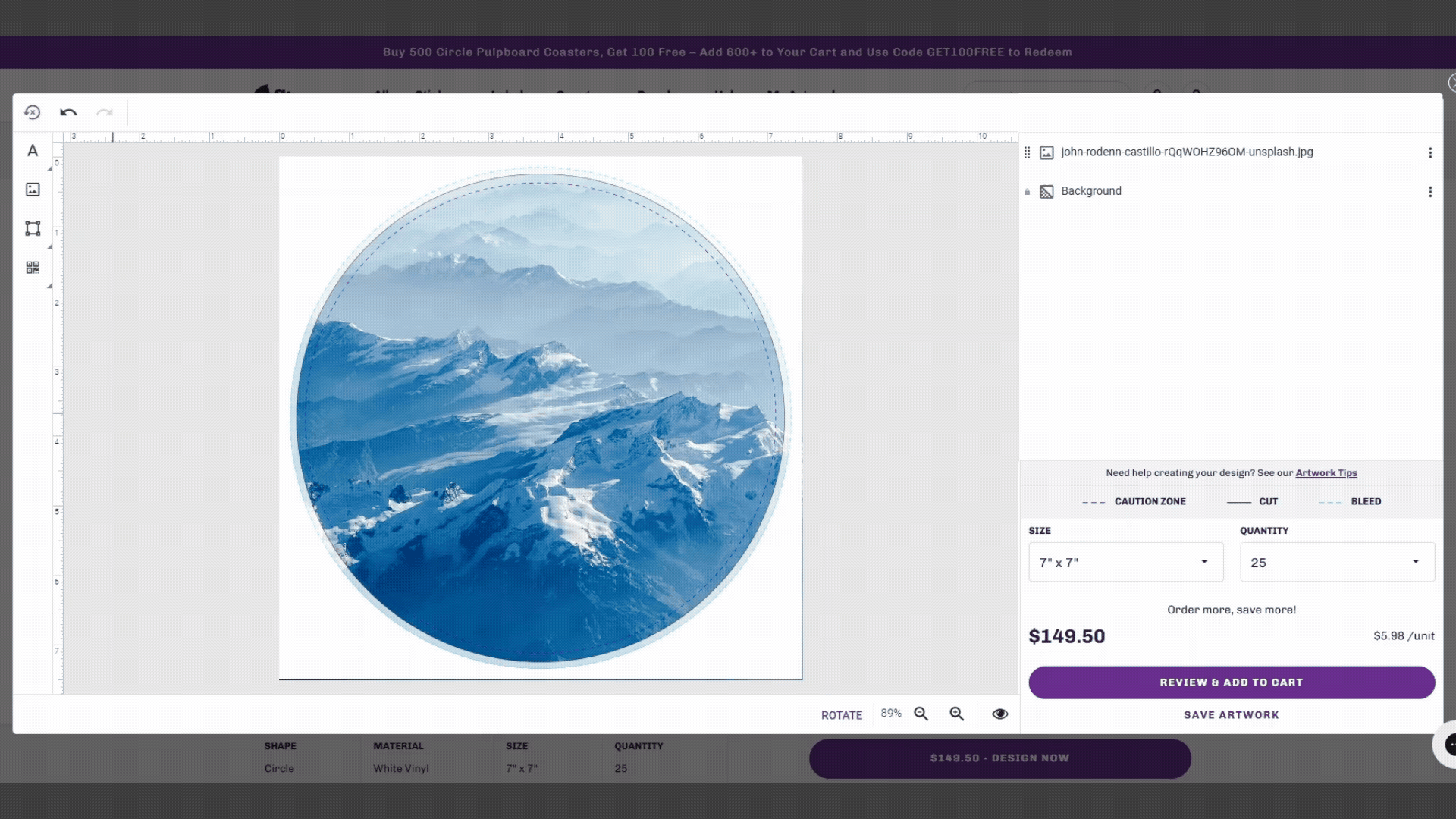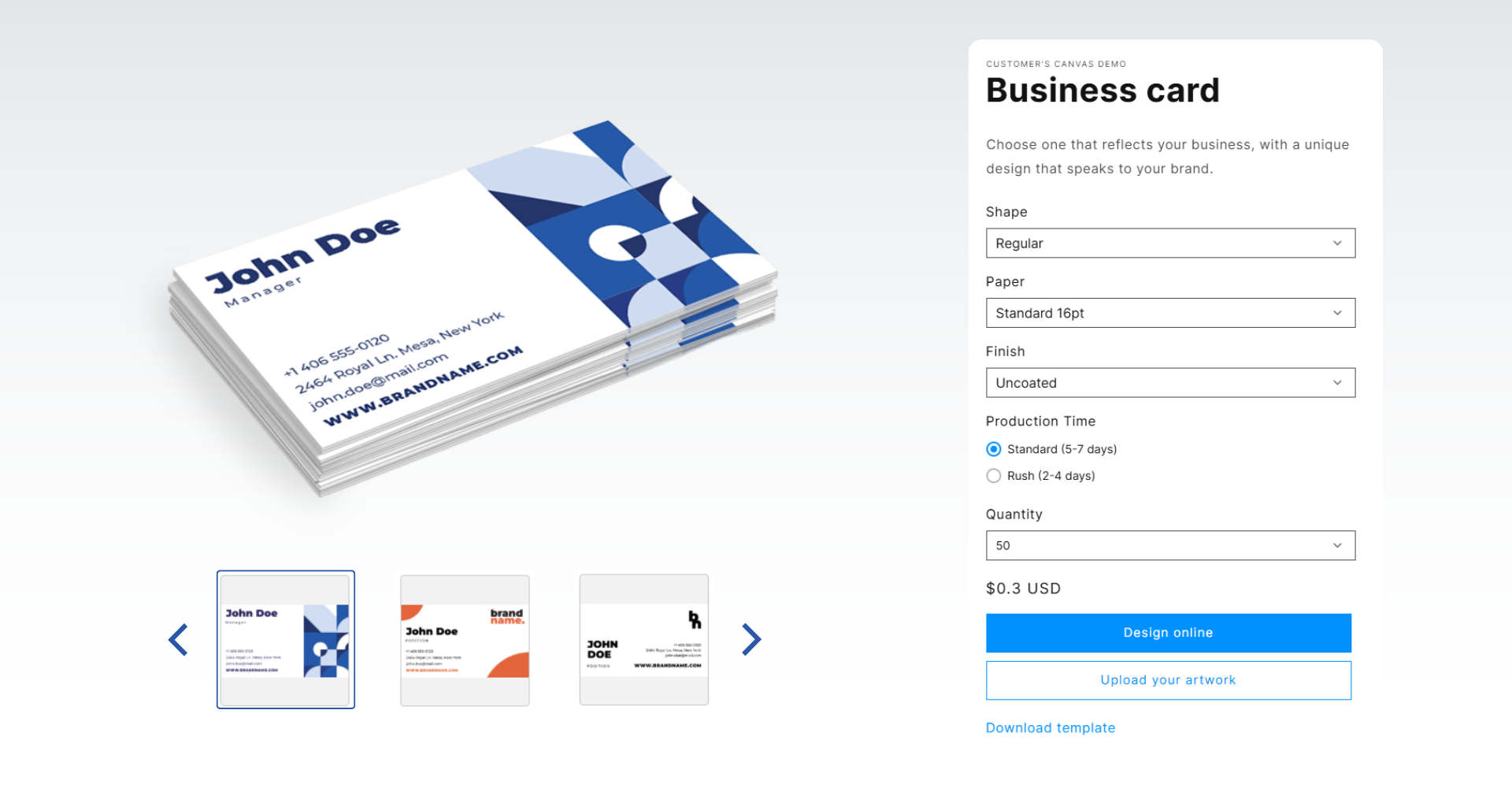There’s no one-size-fits-all approach when it comes to pricing personalized products. Each business has its own product structure, e-commerce setup, and long-term goals—which is why pricing becomes one of the most strategic aspects of any web-to-print integration.
At Customer’s Canvas, we recognize that every company is unique. That’s why we offer flexible options for configuring how prices are calculated for personalized products—whether you need a simple, no-code setup or a highly customized integration with your backend systems.
In this article, we’ll break down the two main approaches to pricing personalized products in Customer’s Canvas: built-in pricing, managed directly in our admin panel, and external pricing, handled by your e-commerce platform or custom backend. We’ll also explore how to choose the right method based on your technical resources, business requirements, and future plans—and why pricing should be addressed early during the technical assessment phase of your project.
Why Pricing Setup Is a Strategic Decision
Many teams treat pricing as something to configure at the end of a project. But when it comes to personalized product workflows, pricing should be planned upfront. Your pricing setup will determine:
- How easily your team can manage and update products
- What kinds of offers and product variations you can support (e.g., quantity-based discounts, size-based markups)
- How smoothly orders flow into your e-commerce or ERP system
Just as importantly, it’s about planning for growth. If you expect to expand your product catalog, support complex configurators, or launch new sales channels in the future, your pricing architecture should support that vision from the start. That’s why we always address pricing during the technical assessment phase of each project.
Built-In Pricing: Flexibility Without the Code
Internal pricing means all product price calculations are handled directly within the Customer’s Canvas admin panel. This approach is ideal for teams that want to simplify pricing management and avoid the need for custom development.
It’s especially useful if:
- You don’t have in-house developers or prefer to avoid building custom pricing logic from scratch
- You work with platforms like Shopify or WooCommerce, where variant or pricing limitations can create challenges
- You want to apply conditional logic—such as quantity-based discounts or size-based markups—directly within the personalization flow
How It Works
Simple Pricing Setup
In the Customer’s Canvas product configuration panel, you can enter base prices for each variant directly. This works well for straightforward products with a fixed pricing structure.

Advanced Pricing Rules
Need to charge extra for large sizes or rush production? You can configure rule-based pricing using our built-in tools. For example, “Add 20% for XL” or “Discount 10% on orders of 100+ units.”

Seamless Cart Integration
Customer’s Canvas can pass the final calculated price to your e-commerce system at various stages of the buying journey.
Depending on your setup, the updated price can be:
- Displayed in real time as the user selects product options on the product page
- Shown during the personalization process, so the user sees the final price as they configure the product
- Or sent directly to the cart during checkout, ensuring that all calculations are handled behind the scenes
This approach ensures accurate pricing throughout the customer journey, improving confidence and reducing friction from product selection to final purchase.
Why It Matters
Internal pricing lets non-technical teams launch faster without compromising on flexibility. It’s a powerful option for businesses that need to support personalized products without heavy backend development.
External Pricing: Full Control from Your Backend
With external pricing, all price calculations happen outside of Customer’s Canvas—typically in your e-commerce platform, MIS, or a custom-built pricing engine. Customer’s Canvas passes the product configuration data to your system, which then determines the final price and sends it back.
This approach is ideal if:
- You have existing SKU-based pricing managed in your e-commerce backend or ERP
- You want to support complex, customized, or dynamic pricing scenarios—and have developers to build and maintain this logic

How It Works
SKU-Based Pricing
Fill in the SKU field in the Product Information Management (PIM) module of Customer’s Canvas. When the product is added to the cart, your e-commerce system retrieves the corresponding price based on the SKU.
Custom Quoting Modules
For more complex use cases—like multi-component packaging or detailed configurators—your team can build a pricing service that receives configuration data from Customer’s Canvas and calculates the final price accordingly.
This price can then be:
- Sent back to Customer’s Canvas so the user sees the final price while they’re customizing the product—before they even reach the cart
- Or pushed directly to your e-commerce platform at checkout
Third-Party Quoting Services
Beyond your in-house systems, you can also integrate third-party quoting solutions. Many MIS and ERP platforms offer built-in pricing capabilities. Customer’s Canvas can pull pricing data from these systems via integration, allowing you to centralize your quoting logic without duplication.
Why It Matters
External pricing gives your team the freedom to implement any pricing logic you need—from real-time quote calculations to deep ERP integrations—while still delivering a seamless personalization experience through Customer’s Canvas.
We Help You Decide
Every business has unique needs, so there’s no universal pricing setup that fits all cases. During the technical assessment phase, we collaborate closely with you to evaluate:
- Your e-commerce platform capabilities
- The complexity of your product catalog
- Available technical resources
- Your custom business rules that define how pricing should adapt to your specific sales and product conditions
Together, we analyze these factors and develop the pricing strategy that best balances flexibility, maintainability, and seamless integration with your existing systems.
Final Thoughts
Choosing the right pricing strategy in Customer’s Canvas can set the tone for a successful and scalable web-to-print workflow. Whether you’re looking for a low-code solution with built-in pricing rules or a custom-coded pricing engine tied to your MIS, we’ll help you find the best path during the technical assessment phase.
Have questions about how pricing could work in your setup? Contact our team to schedule a consultation—we’re here to guide you every step of the way.
